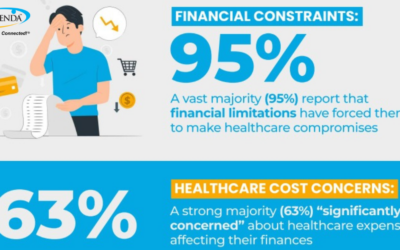The senior living industry is experiencing the classic Innovator’s Dilemma: how can we both serve our residents’ current needs while simultaneously preparing for their future needs? In this article, you will discover three warning signs that your senior living organization may be falling behind.
Warning Sign #1: Innovation is an Afterthought
Innovation must be a core pillar of your organization if you hope to withstand the changing tides in our industry. In a 2008 Business R&D and Innovation Survey from the National Science Foundation, only 2,000 of the 49,000 organizations in the real estate industry and 3,000 of the 183,500 organizations in health care services reported a new or significantly improved process in logistics, delivery and distribution methods. That’s 0.04% and 0.016% of organizations in each respective industry. Many senior living operations hold the power to become more innovative in their processes and drive that number up.
Organizational innovation in an industry as complex as ours is admittedly difficult, but nevertheless important to growth. While senior living organizations may vary in methods, innovation is the foundation upon which their workplace and business practices are built.
As an example, an innovative CCRC owner may research a competitor’s operational efficiencies or investigate a new technology that will help them distribute resources more effectively or cut down on operational costs. Being an innovative senior living operator has a lot to do with taking a highly “educated chance” to disrupting the status quo and developing better operational methods.
Warning Sign #2: Resource Allocation is Inefficient
Senior living operations facing the innovator’s dilemma recognize the issue of serving both current residents’ needs while preparing for their future needs. While the organization may currently be in the black, a disruption in the market could threaten future growth and success.
Inefficient resource allocation often occurs when a senior living community owner is faced with the threat of a new competitor. A new player in town may shine a light on service gaps and owners may divert funds and resources to compete – be it a new pool, landscaping enhancements or dining hall. These funds may be better invested to provide a better experience for residents in more innovative, impactful ways.
When innovation is part of the process, others react to the innovative community, and resources are not allocated inefficiently to react to market dynamics; in fact, innovators are those who are creating the market dynamics that others are responding to.
Warning Sign #3: The Innovation Process is Flawed
Without a process for innovation, senior living organizations may try to utilize processes that worked for other organizations, essentially trying to force-fit it into existing structures. These tactics rarely lead to innovative ideas or process improvements.
Another common issue is that the innovation process becomes sporadic, tied to the schedules or demands of a select few executives. Organizations should instead empower everyone in the company to develop innovative business practices. Empowerment means that frequent, small failures are more than tolerated, they are encouraged! It’s only through this spirit of innovation that true breakthrough improvements in workflow, process, and technology can take shape.
As an example, consider the assisted living executive who is keenly aware that their current healthcare delivery system is inefficient yet lacks sufficient time to address the issue. By empowering their team to create a new process, they are able to reach a solution more quickly and addresses the underlying problem as opposed to trying to solve the problem themselves.
By encouraging them to experiment and fail fast on the way towards success, the team is motivated to stay focused on their final goal, and is not concerned over the short-term learning experiences as they get there. People who are most connected to the issue often have the best ideas for an actionable solution, and solutions may not be transformative, or even viable, on the first few iterations. However, by leveraging the entire team, the company reaches an innovative solution more quickly.
Innovation in the Senior Living Industry
Do you agree or disagree with any of these three warning signs? Comment below with your thoughts.




